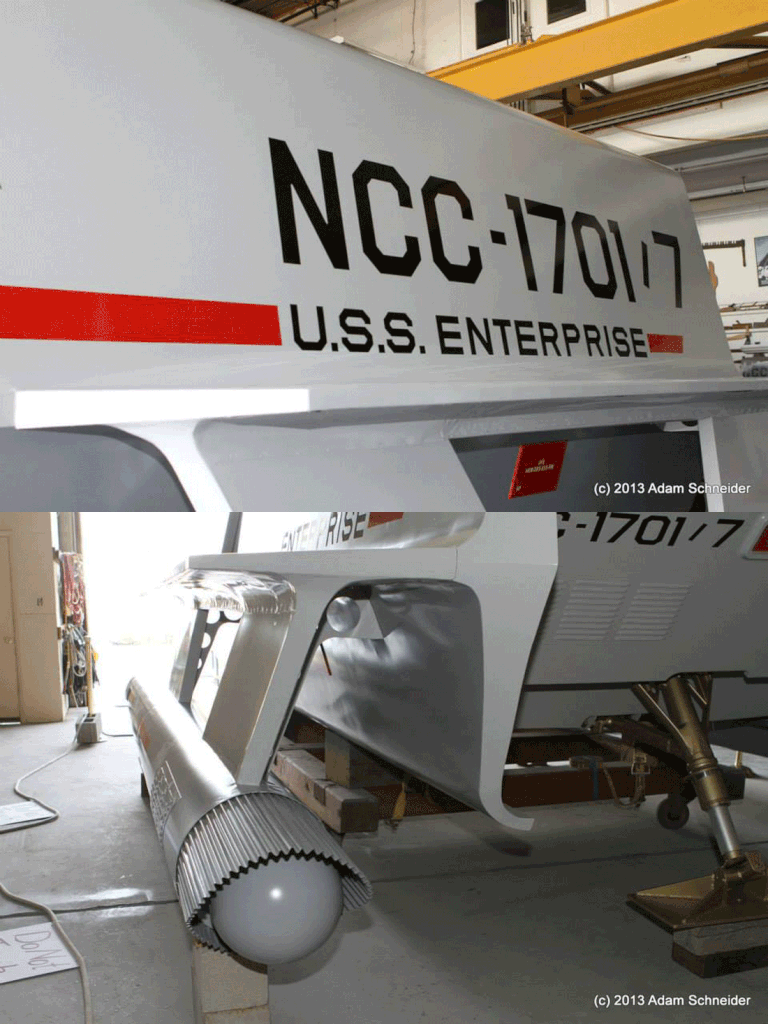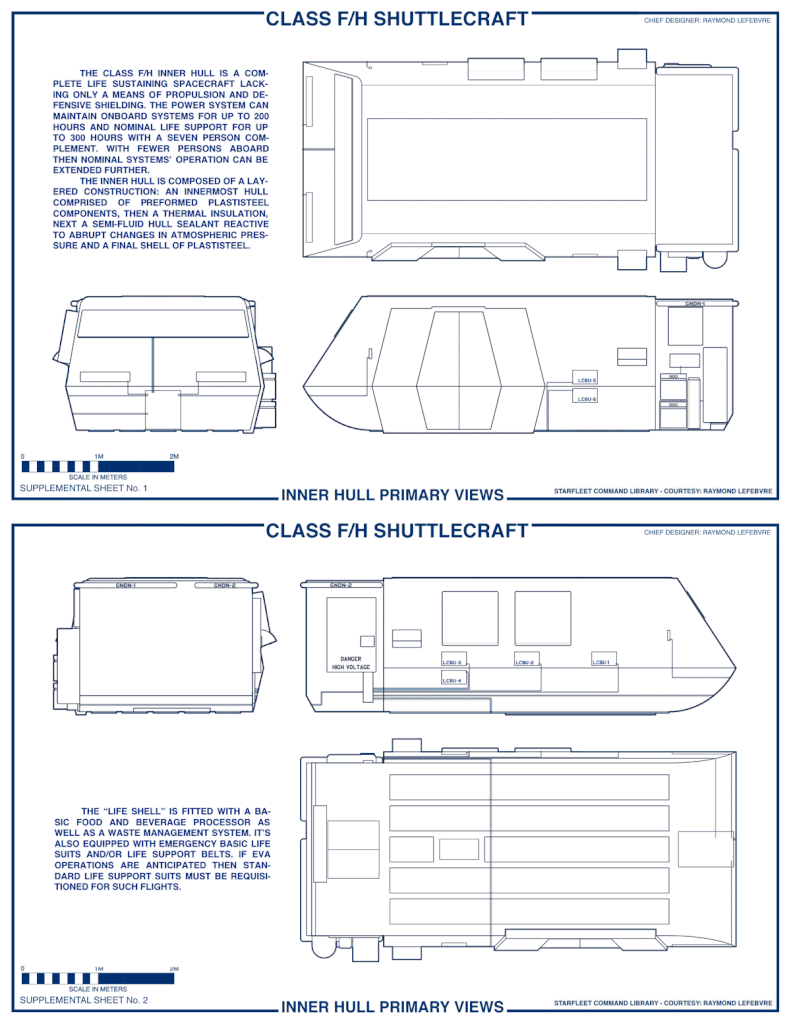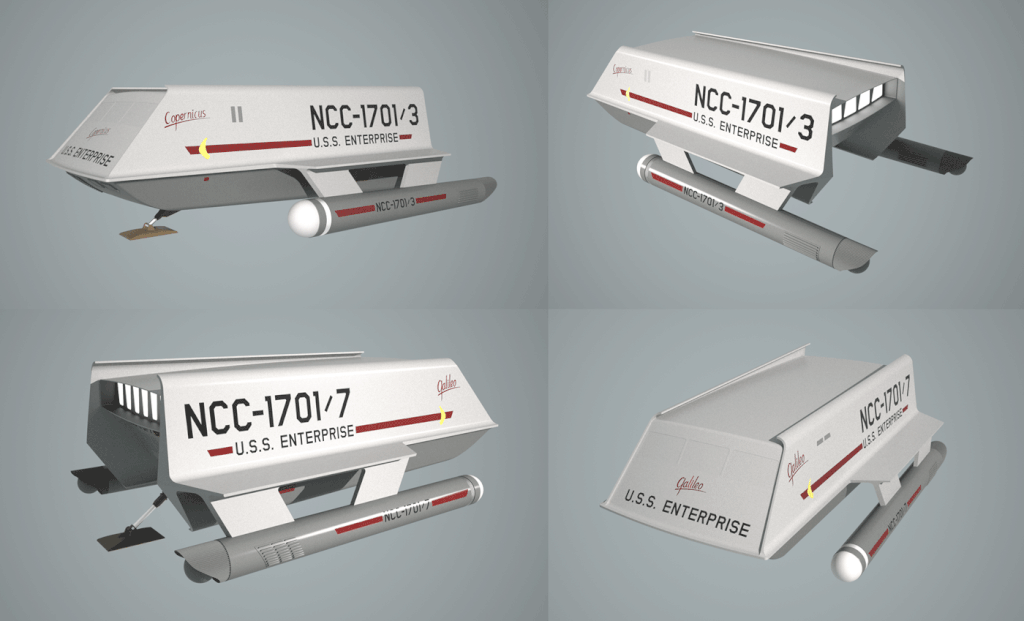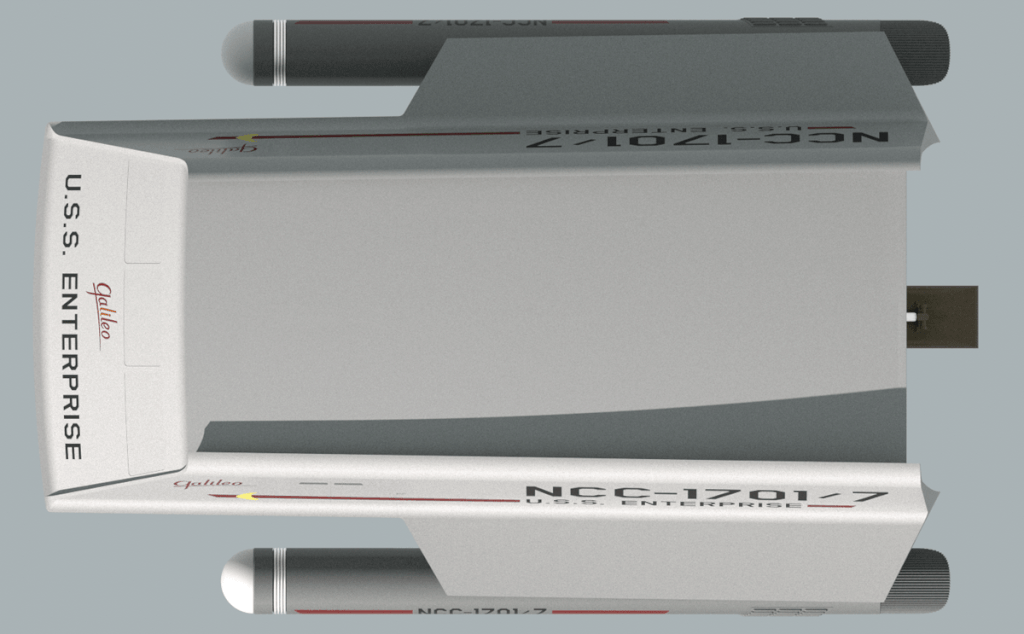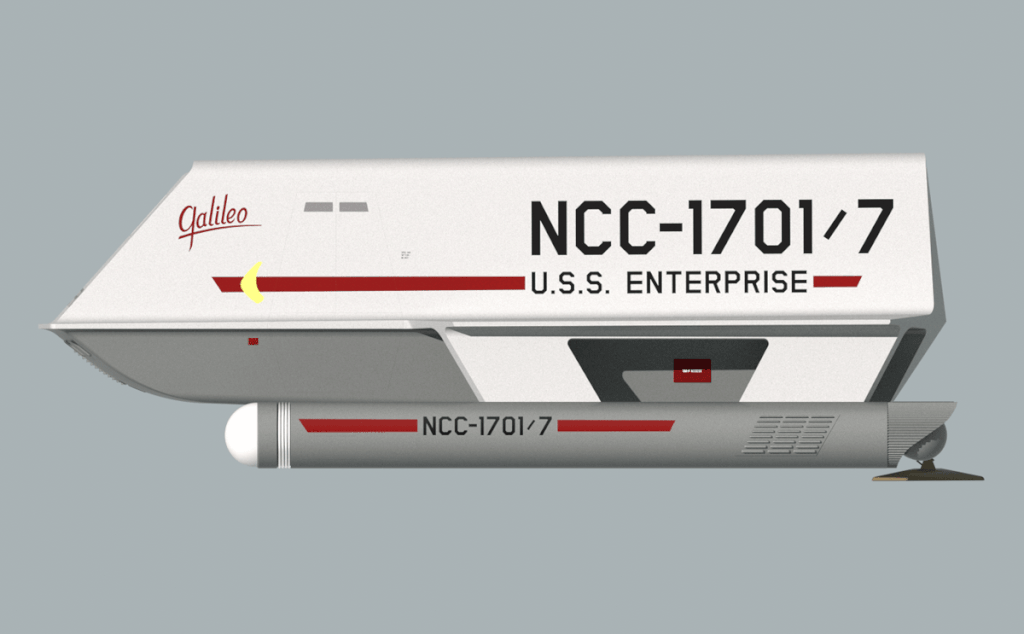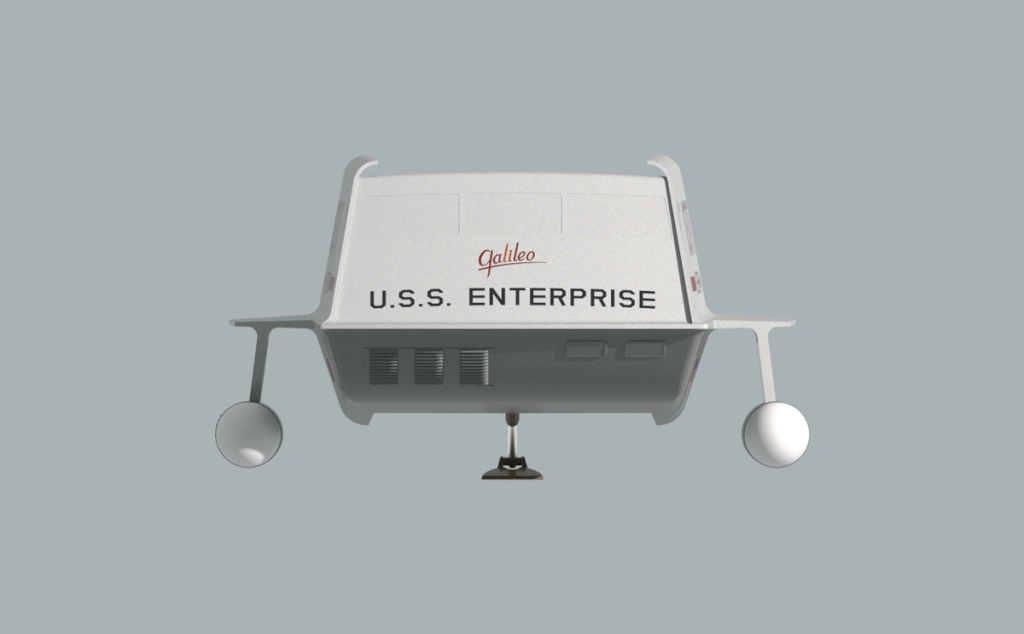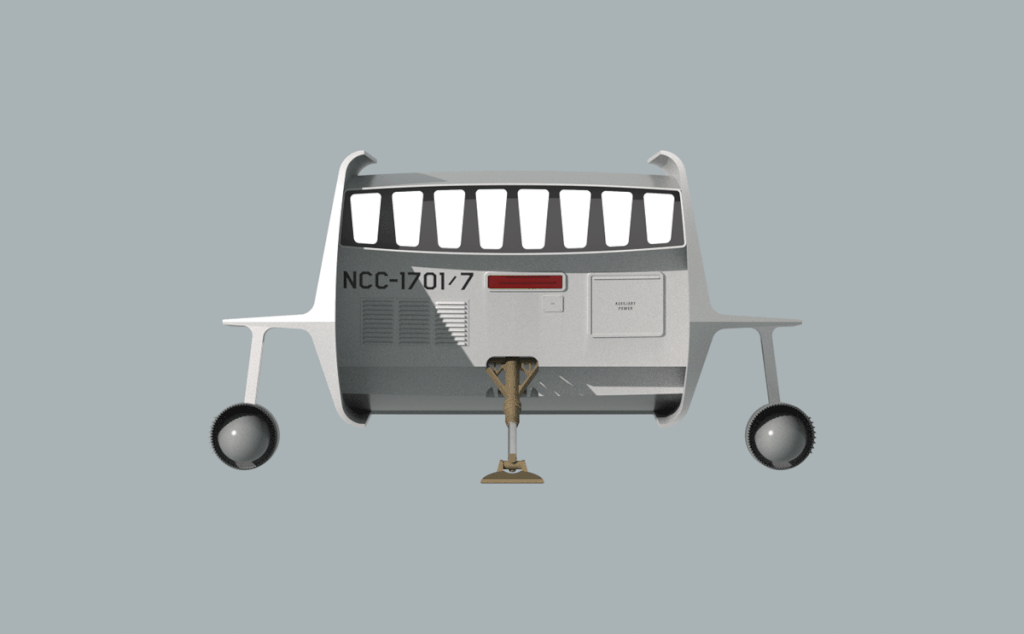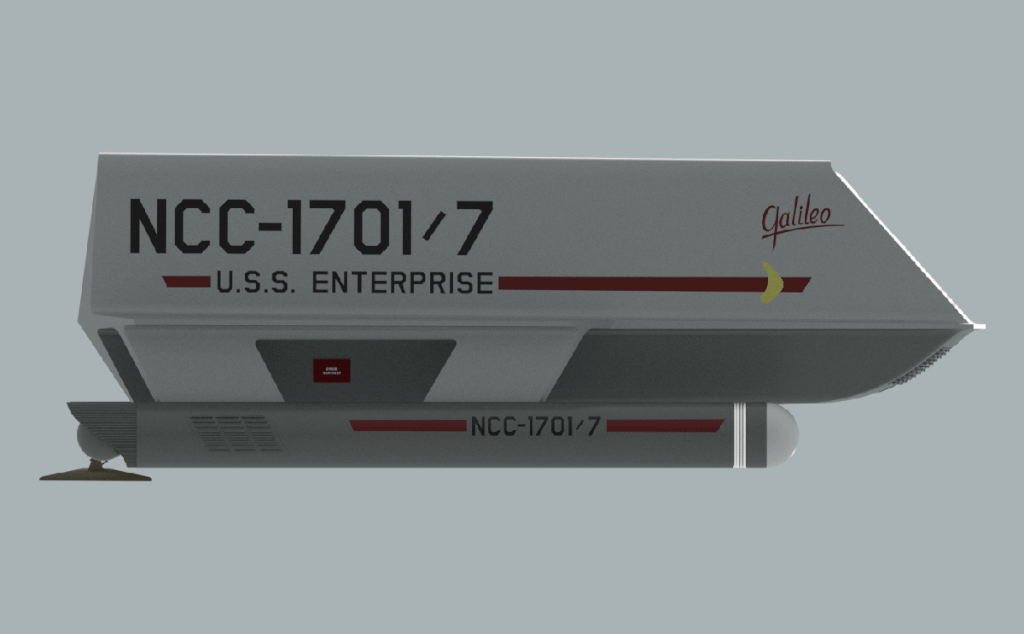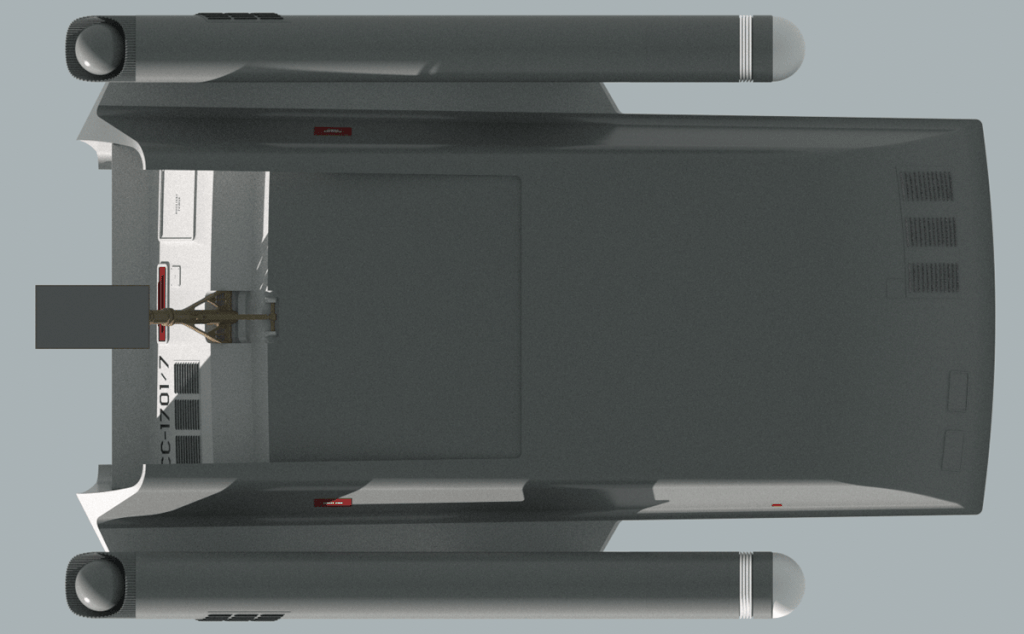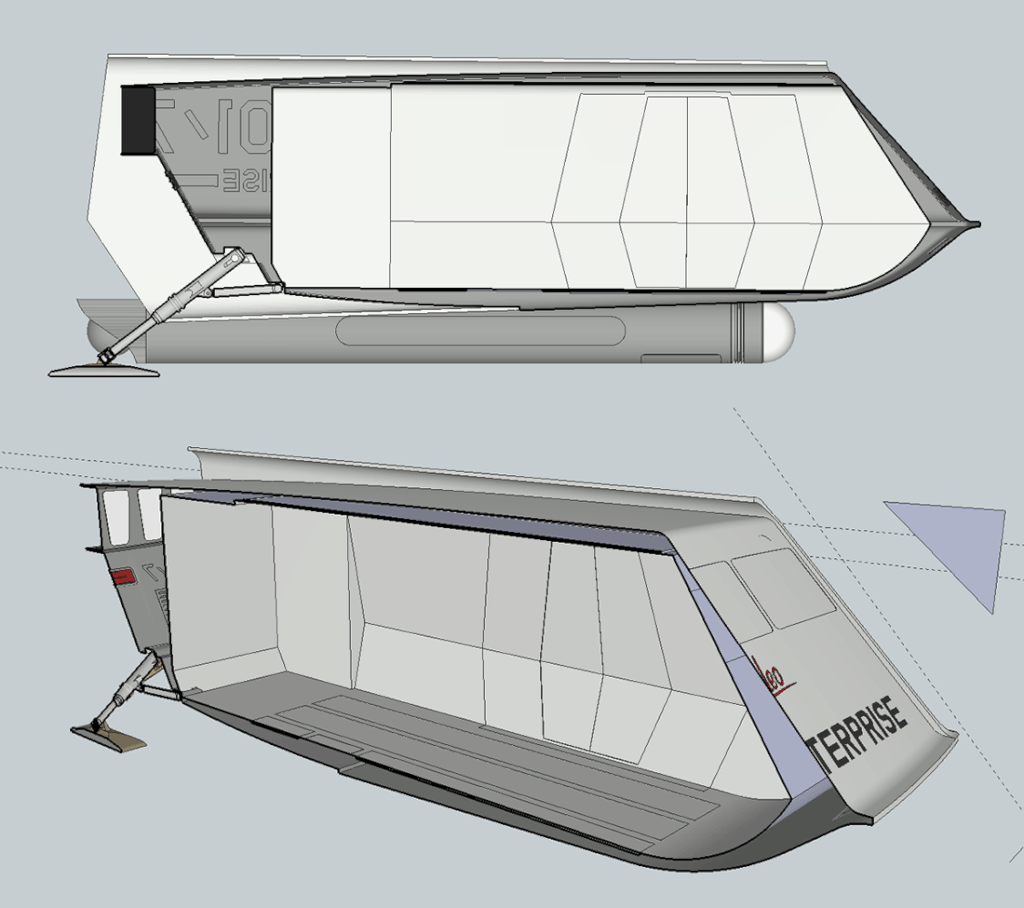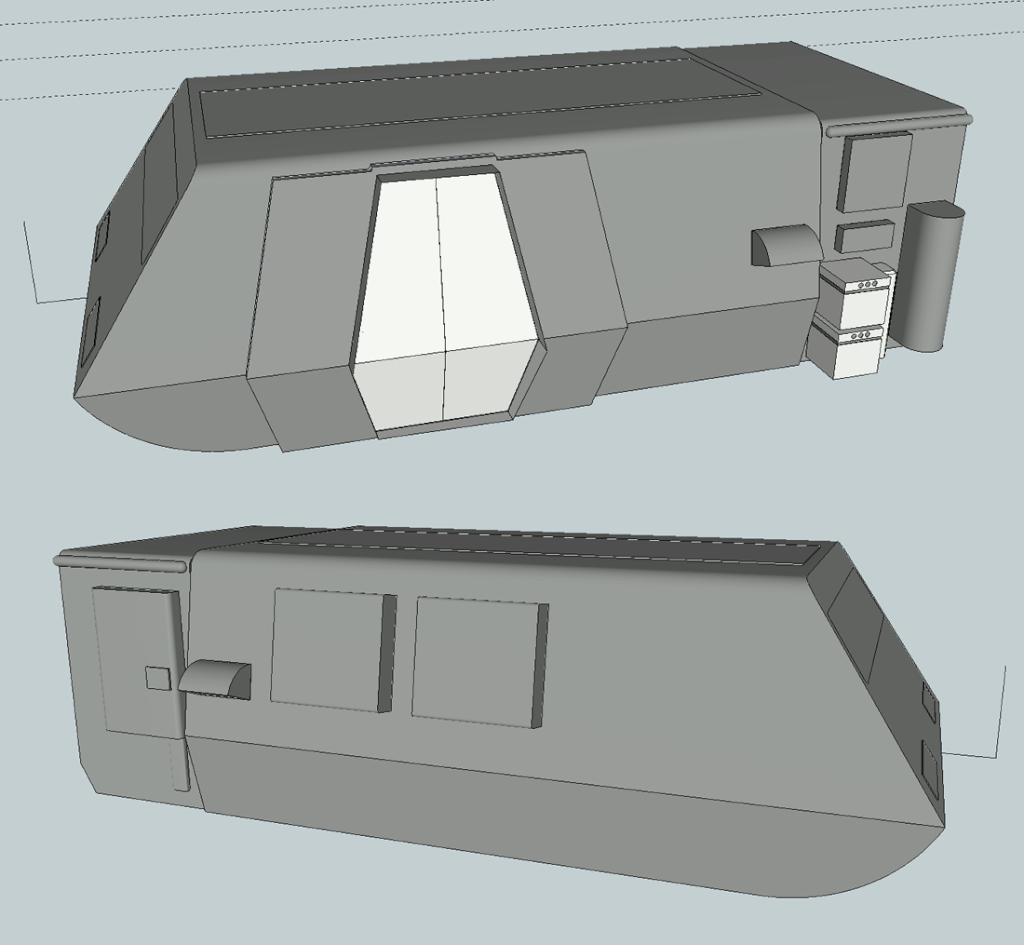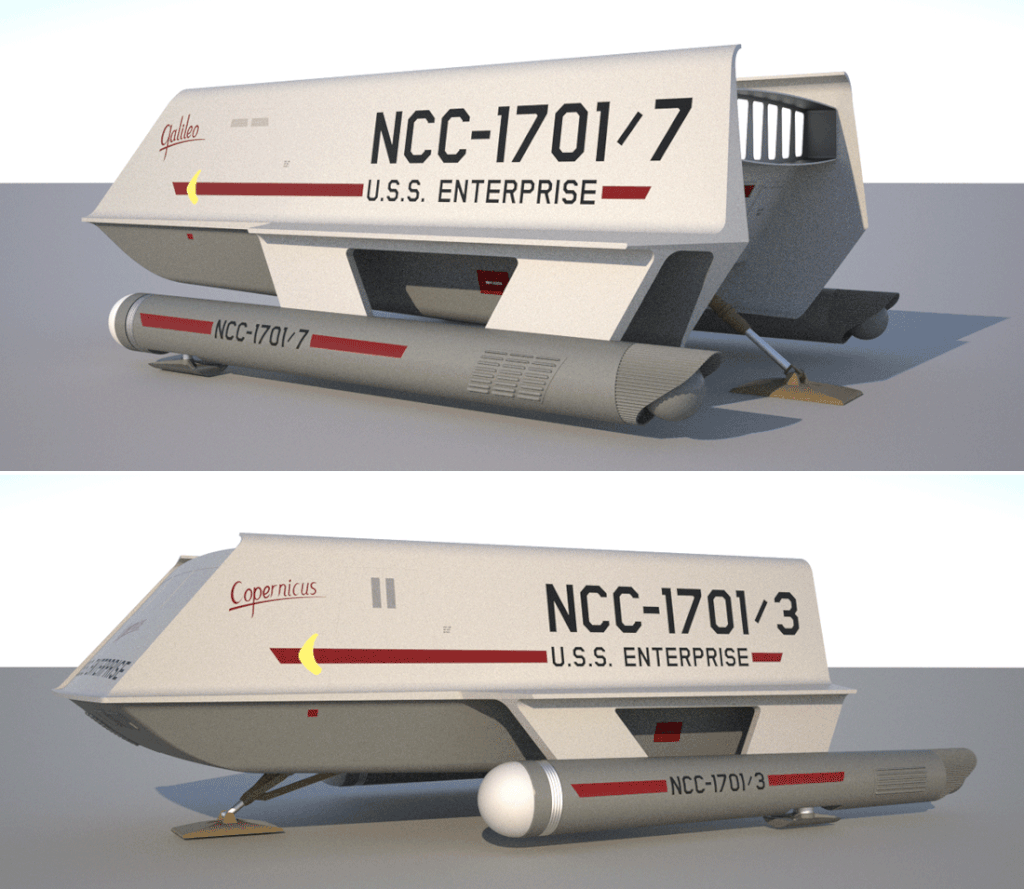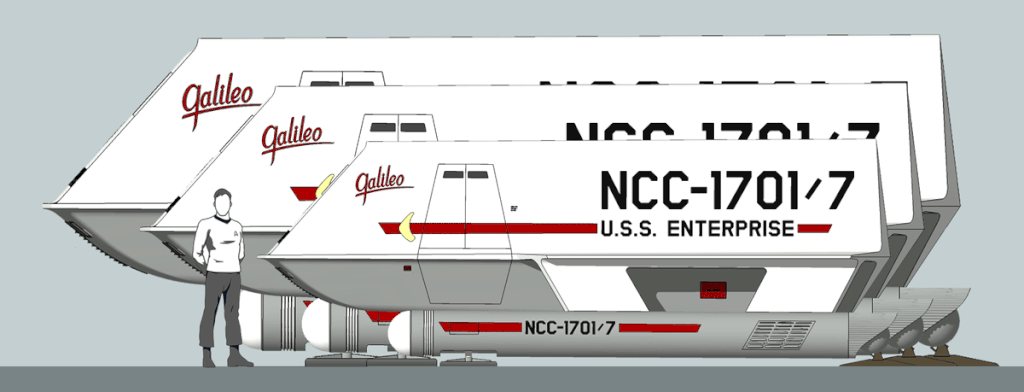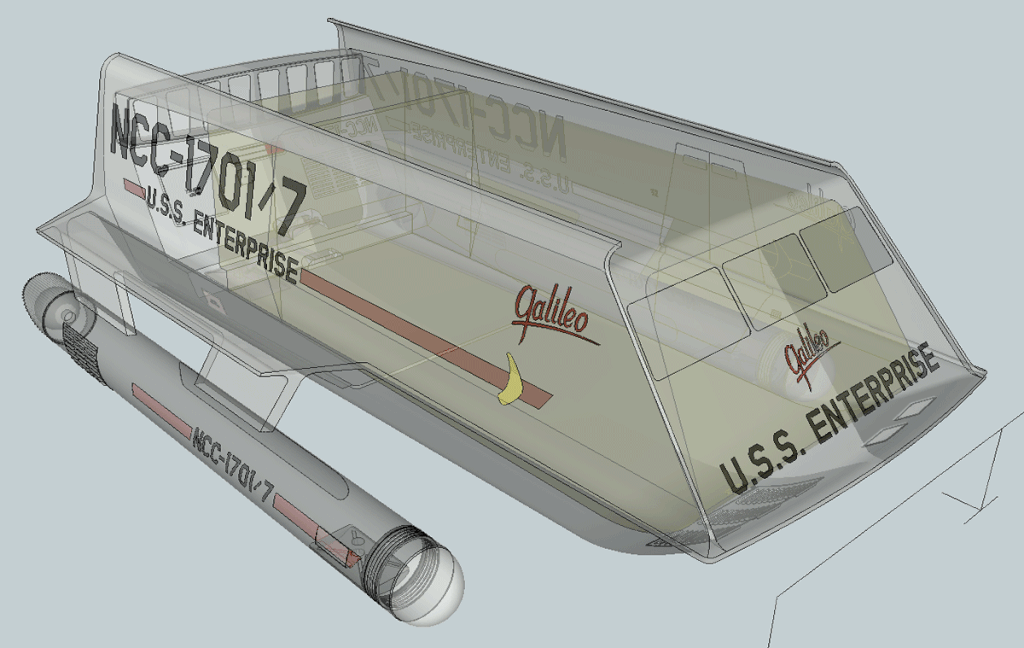
What this shows is the outlines of the interior compartments (fore & aft) in place. You can see that it certainly doesn't fill out (or fill in) the available space. The interior has parallel walls and flat ceiling and deck that cannot correspond with the ship's exterior shape. I tried to maintain the interior's shapes and proportions to stay as close as possible with what we saw onscreen. Yet we come back to same recurring issue: how big is the shuttlecraft supposed to be?
If we insist on an interior as sizable as what we saw onscreen then we end up with a vehicle about 32 ft. in length and frankly too large to be properly accommodated with the
Enterprise's hangar facilities (and recall that the starship has to accommodate at least four shuttlecraft). Conversely if we insist on an exterior in keeping with what we saw onscreen than 22 ft. in length doesn't leave near enough room to allow for anything like the interior we saw onscreen.
I think initially Matt Jefferies planned for a reasonably compact vehicle--maybe around 24 ft. But the realities of television production compromised that initial concept. Firstly they needed an exterior they could manage to move and yet they also need an interior to could film with the then bulky studio cameras and lights. The result was a compromise all around where the interior and exterior were inconsistent with each other and that couldn't satisfy any real sense of credibility in terms of scale.
If one chooses one could have a "full size" standing interior as we saw onscreen with an enlarged exterior to accommodate it and handwave away any sense of credibility. But when you do that you run into other problems beyond being able to accommodate such a large craft within the "real"
Enterprise's hangar area. Firstly the step-up height to enter and exit the craft becomes inconveniently and awkwardly high. The second problem is that to retain the proportions of the onscreen interior set you now have a lot of space between the exterior and interior hulls. And that means the access hatch can't work (at least on the inside) the way it was seen onscreen simply because the inner bulkhead is no longer right up against the outer hull. If you widen the interior to match the outer hull you now greatly change the proportions of the interior.
No matter what way you go you have to make some sort of very obvious compromise where you gain something and noticeably lose on something else.
Arrgh!
So now we come back to what I chose to do. And I assert that this is solely my solution and is not not intended to be a definitive one. Since I was trying to plan out and create a "real" and fully integrated shuttlecraft then I went with the approach of tryting to fix some of the production compromises or at least as many of them as possible. Beyond that I accepted that I had to invent certain things to make it all work. To that end I did establish certain parameters:
- The exterior has to look near exactly as the full size mockup onscreen even if my ship will obviously be larger than the actual mockup while not being too large to be properly accommodated within the
Enterprise's hangar facilities.
- The interior must also look like the onscreen set even while acknowledging that something has to give in terms of size. In this case the interior compartments retain their overall shapes yet lose a bit in cabin length and ceiling height. It won't be as cramped as MJ's initial concept, but neither will it be as spacious as the onscreen version.
By accepting these compromises one finds certain things come into play. There is now a credible amount of space between the exterior and interior hulls to allow for mechanicals (they have to be there on a real ship) and to allow for the equipment that was being jettisoned in "The Galileo Seven." It also allows for a limited amount of space for the "under deck" compartment Scotty was working in in "The Galileo Seven." The double hull also allows for those "swing out" compartments that fold out from the inner hull where phasers and communicators are show to be stored. The double hull simply allows for a lot of things that a real ship would need to function the way we saw the shuttlecraft used onscreen in various episodes.


